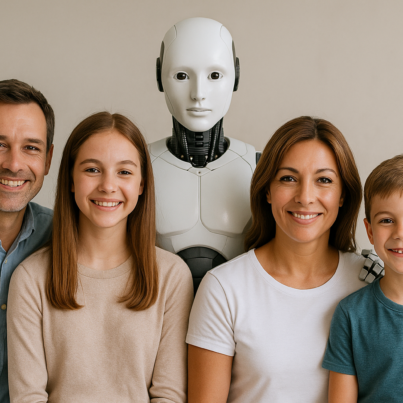What is Computer Vision Used For?
Once a computer has established a detailed understanding of an image, it can communicate the information with a relevant AI system to take one or more actions. There are many different types of computer vision that can be used for various purposes. For example, some common techniques in computer vision include:
- Image segmentation breaks an image down into multiple pieces, each one of which can be evaluated independently.
- Object detection can identify a specific object contained within an image, with advanced object detection systems capable of recognizing multiple objects at a time. An object detection computer vision system might be used on a factory assembly line as a way to detect defective items or flag damaged equipment components.
- Facial recognition is an advanced form of object detection which can recognize a specific human individual’s face in an image.
- Object tracking follows a specific object once it is detected and is frequently utilized with real-time video feeds or sequentially captured images. For example, autonomous vehicles track objects in motion in order to avoid a collision.
- Edge detection is utilized to locate the outer edge of a landscape or object, so the computer can more effectively process what is in the image.
- Pattern detection is a technique that recognizes repeated visual indicators, such as colors or shapes, in a series of images.
- Feature matching is a kind of pattern detection that classifies visuals by matching similarities between multiple images.
- Image classification is used to organize images into categories based on specific parameters. One example of image classification is used by social media providers, who can use the tool to automatically identify and classify potentially objectionable images uploaded by users.
In simpler applications of computer vision, just one of these techniques may be applied. But in more advanced applications, such as computer vision and self-driving vehicles, multiple techniques may be used.
Who’s Using Computer Vision?
Companies across virtually all industries are partnering with AI technology providers to implement computer vision strategies that support their needs and goals.
In fact, many of us interact with computer vision technology on a daily basis. Everything from the facial recognition that unlocks your smartphone to self-driving vehicles, Google Translate, and other everyday technologies rely on computer vision in some form.
Computer vision is offering improvements in the arenas of customer experience, worker safety, productivity, and more. Companies are often able to reduce overall costs and boost the efficacy of their efforts, resulting in better outcomes for consumers across the board.
Challenges of Computer Vision
Computer vision algorithms and technology has grown by leaps and bounds in recent years, improving its accuracy rate from 50 to 99% in the span of a decade. But, like many emerging technologies, there are still some challenges related to computer vision applications.
The visual system used by humans is incredibly complex, and computer vision systems rely on a comparison basis. So, computers must undergo a significant level of training and learning work to handle tasks that would be second nature for humans. That being said, once sufficient learning has been completed, computer vision systems are infinitely more efficient overall.
Another challenge of computer vision technology is the need for advanced software and hardware solutions. Without an evolution in these components, it is extremely difficult to successfully integrate computer vision into a real-world application.
In terms of the “big picture” of the future of computer vision, all signs point to the promising potential to transform how our world does business.




